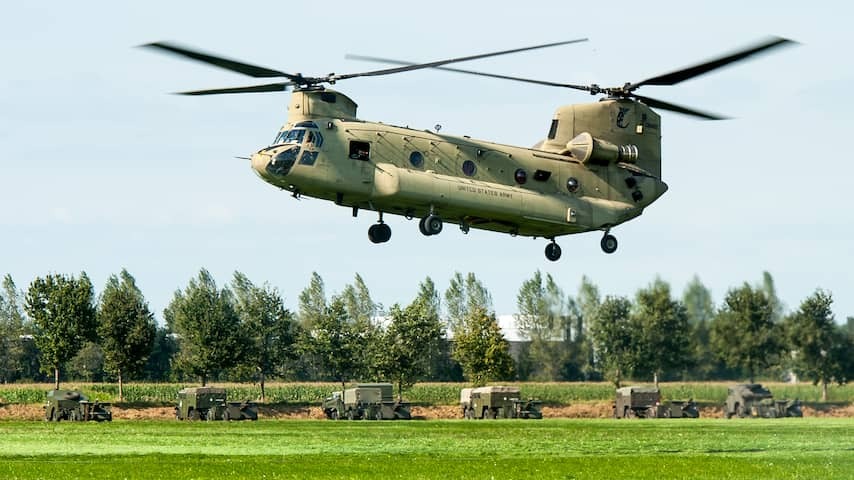
The next Minister of Defense will likely be able to spend many billions extra. But where will that money go? Specialists state that Europe has a considerable defense industry, but much money will flow to the United States.
With the NATO summit in The Hague in prospect and threat from the east, the House of Representatives was fairly unanimous last week: defense spending must increase, probably by some 16 to 19 billion euros.
How was that amount determined?
The Dutch defense budget is 22 billion euros this year. That is an amount equal to 2 percent of our economy. Many other countries are also around that percentage. But the American government wants Europe to contribute more to its own defense.
NATO thinks that spending should increase from 2 to 3.5 percent to get European defense in order. For the Netherlands, that amounts to 16 to 19 billion euros extra, an increase that will probably be implemented in stages.
A decision on the higher budget will be taken during the upcoming NATO summit, although Dutch politics has the last word on its own defense budget.
What should the Netherlands spend those billions on?
That is not entirely clear yet. However, the now outgoing Minister of Defense Ruben Brekelmans said last month that NATO primarily wants extra air and missile defense, as well as artillery, more battalions for the army, and so-called ‘enablers’. The latter group includes spending on supporting items such as logistics and supplies.
According to a recent report by the Advisory Council on International Affairs (AIV), a government advisor on foreign policy, the Netherlands’ priority should be, among other things, air and missile defense, such as F-35 fighter jets and missile systems, and tanker aircraft. Strengthening existing parts of the armed forces should also be a priority.
“We must especially become better at seeing the enemy coming from a distance and also being able to eliminate them from a distance,” says Professor of War Studies Frans Osinga. “What you actually want is to be so strong that the opponent hardly has a chance to reach the border. In addition, you must be able to protect your own troops.”
Osinga sees this primarily as a task for Europe as a whole and not just for the Netherlands. Each country has its own specialty. “Germany, for example, is good at building tanks, while Finland and Sweden make good artillery.” The Netherlands, with Damen, has a strong maritime company.
Dick Zandee, defense specialist at knowledge institute Clingendael, adds that you should not only look at the purchase of equipment. “You see in Ukraine that you must be able to defend yourself for a longer period of time and therefore have ‘continuing power’.”
Zandee gives a tank battalion as an example. “They last for several decades. But two-thirds of the costs you have are in the operation. Think of, for example, fuel and ammunition. So there must also be money to maintain such a battalion.”
Can the Netherlands produce all equipment itself?
The Netherlands has two prominent manufacturers of military equipment. In addition to the aforementioned Damen, there is Thales, which is good at radar technology and rapid-fire weapons. But we will have to get much elsewhere. “In the Netherlands, much military industry has been wrongly dismantled in recent decades,” says Osinga. “But the European Union still has a good defense industry.”
However, according to him, it may take some time before you have all the desired equipment. “All countries are now knocking on the same doors. So the producers are getting busy.”
Zandee also expects European countries to end up in waiting lines. “For example, the Netherlands did not get its defense budget in 2024. In addition, many things go slowly. If you want to expand a factory, there are objectors, nitrogen rules, and environmental regulations.”
The AIV sees even more bottlenecks in its recent report, especially staff shortages and access to raw materials. The advisory council also emphasizes that companies that want to expand must have guarantees that they can also sell their products in the long term. “In Europe, you must in fact build an ecosystem of manufacturers and suppliers,” says Osinga.
Can we do without American equipment?
Not for now. A good example of this, according to Zandee, is the Dutch air mobile brigade. It makes extensive use of the Chinook helicopter, for which there is no European alternative.
Some critics therefore suspect that the European addiction to American defense equipment plays a role in President Donald Trump’s decision to force Europe to spend more on its own defense. This would benefit the American economy.
“In recent decades, we have come to lean on the US. For example, you see that the higher you get in the air, the more American equipment is used,” Zandee explains. “For example, we have few high-flying drones. And Europe does not have much in space either. However, the EU has a good maritime industry, but the weapon systems on those ships come from America again.”
In addition, many tanker aircraft, which provide fuel to other aircraft, also come from the US. “The question is mainly: what can you get in Europe in the short term and in what area are you addicted to the US?” says Osinga. “If you have to buy something in America, then so be it.”